


Moshibashu
gamer level 7
16821 xp
16821 xp
followers
11
11
Use my invite URL to register (this will give me kudos)
https://boardgaming.com/register/?invited_by=moshibashu
profile badges




recent achievements

Baron / Baroness
Gain 10 total followers
Gain 10 total followers

Rosetta Stone
Explore select games by completing a series of exploration actions. learn more »
Explore select games by completing a series of exploration actions. learn more »

Explorer - Level 5
Earn Explorer XP to level up by completing Explorer Quests!
Earn Explorer XP to level up by completing Explorer Quests!

Mask of Agamemnon
Explore select games by completing a series of exploration actions. learn more »
Explore select games by completing a series of exploration actions. learn more »
Player Stats
Critic (lvl 2)
435 xp
435 xp
Explorer (lvl 5)
3701 xp
3701 xp
Professor (lvl 2)
557 xp
557 xp
Reporter (lvl 2)
460 xp
460 xp
About Me
I've only recently (early 2015) started playing more board games, trying to make it one of my hobbies. I've played board games off and on a lot as I was growing up. I've always enjoyed them.
When I was young I would play some games with my family but nothing too serious. Scrabble and Careers were some of our favorites. With my friends we were really into various CCGs. Started from simply collecting Pokemon cards, to playing a lot of the DBZ card game and Magic the Gathering. We would visit our local game store regularly for new cards. We played a lot of the original Mage Knights too, I still have my collection! Finally, we got heavily into Yu-Gi-Oh and still play it every so often today.
In college I played some games with friends. I discovered Dixit, Betrayal on House on the Hill, Moods, and other party games. I enjoyed all of them but it was just a fun little activity to do once in a while.
However, later one of my friends introduced me to a whole new family of board games, each with different playing styles and strategies and themes. It was wonderful and I came to realize that board games are so much more than what I originally thought! I remember Dominion was the game that changed everything for me, probably why I love deckbuilders so much!
So now, I guess I'm playing catch up with the board game craze. I haven't played a ton of different games, and at times I feel overwhelmed by all of the different games out there, but I really am enjoying it! I love discovering new game mechanics, comparing various themes, and falling in love with the artwork in some games. I'm an artist so the art in a game is really a focus for me, and boy is there some wonderfully designed games these days!
At times it's hard for me to find people to play with, all of my close friends live some distance away, but I'm slowly building up my little board game collection and hope to share new games with new friends as I continue through this exciting journey!
When I was young I would play some games with my family but nothing too serious. Scrabble and Careers were some of our favorites. With my friends we were really into various CCGs. Started from simply collecting Pokemon cards, to playing a lot of the DBZ card game and Magic the Gathering. We would visit our local game store regularly for new cards. We played a lot of the original Mage Knights too, I still have my collection! Finally, we got heavily into Yu-Gi-Oh and still play it every so often today.
In college I played some games with friends. I discovered Dixit, Betrayal on House on the Hill, Moods, and other party games. I enjoyed all of them but it was just a fun little activity to do once in a while.
However, later one of my friends introduced me to a whole new family of board games, each with different playing styles and strategies and themes. It was wonderful and I came to realize that board games are so much more than what I originally thought! I remember Dominion was the game that changed everything for me, probably why I love deckbuilders so much!
So now, I guess I'm playing catch up with the board game craze. I haven't played a ton of different games, and at times I feel overwhelmed by all of the different games out there, but I really am enjoying it! I love discovering new game mechanics, comparing various themes, and falling in love with the artwork in some games. I'm an artist so the art in a game is really a focus for me, and boy is there some wonderfully designed games these days!
At times it's hard for me to find people to play with, all of my close friends live some distance away, but I'm slowly building up my little board game collection and hope to share new games with new friends as I continue through this exciting journey!



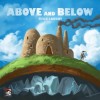








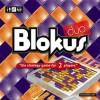










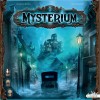





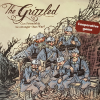
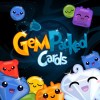






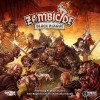









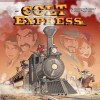
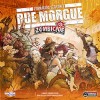
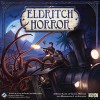


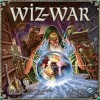






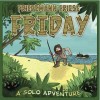




















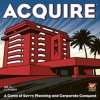

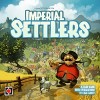


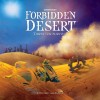




























Dungeons & Dragons: Lords of Waterdeep
At the end of my first game of Lords of Waterdeep I knew it was an insta-buy for me. From the components to the gameplay I am very impressed by the quality of LoW.
Lords of Waterdeep is a 2-5 player worker placement board game set in the city of Waterdeep, which is located the world of Dungeons & Dragons, specifically from the Forgotten Realms settings. You take on the role of one of 11 different Lords. Your goal is to send out your agents to recruit adventurers to your tavern and then send those adventurers out to complete quests in return for riches and glory (victory points). The game is played over 8 rounds, the player with the most VP at the end of the eighth round wins!
What’s In the Box?
LoW has some fantastic components. The rulebook is a good starting place. It is 23 pages long, but about half of that is glossary, quick reference, and specific component information. The game is simple to learn and the rules are very clear. Plus the rulebook has plenty of images and illustrations. The board itself is beautifully illustrated to resemble a map of the city. All of the spaces and symbols are clear to understand. You will also find a multitude of different components; gold, cards, building tiles, wooden adventurer, agent pieces, etc. All of the pieces fit neatly into the plastic container within the box, no need for making a mess on your table when playing. The artwork on all of the quest and intrigue cards also looks great. There’s nothing incredibly bright, flashy, or overly spectacular within the art, which is good. The art is some good flavor to the game but it does not distract from the important information on the cards, all of which is laid out neatly with clear symbols. Finally, the building tiles are incredibly sturdy and clear to read and understand. There’s no artwork on the buildings but once again the important information is easy to understand. Also, each building tile has a little notch in the corner where you will place your control marker on once you purchase that building (one of my favorite parts in the design). Enough ogling over the components, let’s move on.
How to play:
Before you begin Lords of Waterdeep each player is given a Lord Card that will be kept secret from everyone else. These Lord Cards will help determine your overall strategy because at the end of the game you will reveal your Lord and receive VP depending on how you played throughout the course of the game.
LoW is played over 8 rounds. In each round the players will go around the table placing one agent at a time on a building in order to collect adventurers, gold, quest cards, or intrigue cards. Once everyone has placed their agents the round ends, everyone collects their agents, and you begin anew! The goal is to score Victory Points (which is counted through the use of a score tracker around the board). You score VP predominantly by accomplishing quest cards that you have. You complete quest cards by turning in adventurer cubes and gold. Rewards from quests may vary, from flat victory points, to getting some adventurer cubes or gold back, or the quest may give you a continuous effect for the remainder of the game.
Players may also buy buildings with their agents. This is an important part of LoW; buildings open up new locations for everyone to place their agents, and the owner of the building get’s a little payment for people using them.
Another important aspect of LoW is Intrigue Cards. These are basically action cards that either give you a couple bonus adventurers, or may hurt your opponents by forcing them to pay a price.
At the end of eight rounds, play ends, and each player reveals their lord cards and the winner will be determined.
When explaining LoW to people I sometimes compare it to Ticket to Ride in terms of gameplay. The way you need to collect specific colored adventurers (train cars) in order to complete quests (routes) is similar between the two games. Because so many more people have played TtR I use this tactic to perk their initial interest. Obviously the themes are quite different between LoW and TtR.
Theme:
Being set in the Dungeons and Dragons universe many people may first be cautious of LoW. There is certainly a fantasy theme within the game, but it’s relatively mild. There be no dragons or trolls here, and there isn’t any actual combat in LoW. Does that mean there is no strong theme in LoW? Not necessarily. Yes, the theme may not be oozing out of the box compared to other D&D games. I feel that this is strongly due to some of the abstractions within the game. All of the adventurers are represented by colored cubes, and if it’s not explicitly stated what each are (Purple=Wizard, White=Cleric, Orange=Fighter, Black=Rogue) it is hard to grasp that these are people you’re collecting and not just some colored resources.
So, for casual gamers who are just looking for an easy game to pick-up then LoW can work. The theme is not in your face, but it’s still not absent.
When you start to look at the quest cards and imagine sending out your agents to different buildings there is some good thematic work. Each quest is categorized into 1 of 5 different types of quests. This not only has an affect on the gameplay but it also influences the theme. You begin to realize that “Skullduggery” quests require quite a lot of rogues in your tavern to complete them, and the title of the quest/artwork always fits the theme of stealing or spying.
For example the quest “Raid on Undermountain” requires you to gather a large band of different adventurers, each with their unique skillset that will aid your little group in their journey into the dangerous Undermountain. You may not know what Undermountain is when you’re playing, but the idea of a large scale raid is easy to picture and you begin to understand why you need so many adventurers. And the rewards are great at the end of the quest, with 20 VP and some looted gold. Each card also has flavor text on it to further immerse the player.
Even the buildings match the theme. You can imagine sending your agents to the “House of Heroes” to recruit some noble fighters and clerics for your cause. If you dive into the rulebook once again you will find flavor text for each building, each of the agent factions, and each of the Lords you will be playing. You begin to get a feel for character motivations and history.
So on the surface there may not be a lot of theme going on within LoW, which is okay. It allows players who aren’t a fan of the fantasy genre to enjoy the game. However if you want a little more immersion then there are plenty of opportunities for that within LoW.
Final Impressions:
So should you play Lords of Waterdeep? Absolutely YES! It appeals to a large range of players. There is strategy involved in term of when and where to place your agents or what quests to focus on first. There are plenty of opportunities to mess with your opponents plans as well. All active quests are visible so you can see what your opponent needs and you can either jump on it first, or you can play some fun Intrigue cards to mess with their plans.
Lords of Waterdeep is easy to learn and people will quickly understand the overall strategies and goals. It is a great worker placement game but it has the potential to be much more through the use of it’s established theme and minor story telling. I was lucky to have read some Forgotten Realms novels before I played, and while many of the specific names were foreign to me I was still able to appreciate many of the ideas and activities that occur within Waterdeep.
Overall I’m a big fan of Lords of Waterdeep.